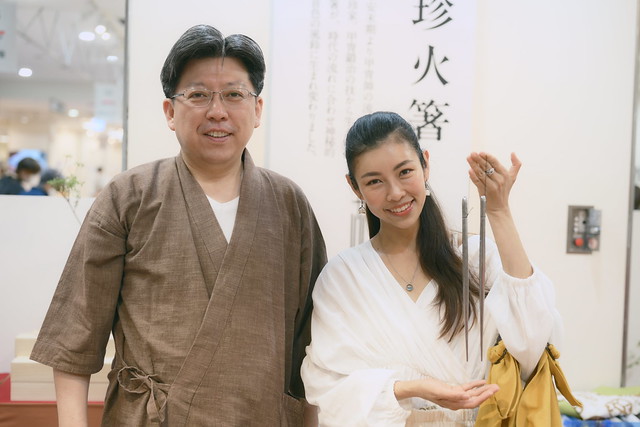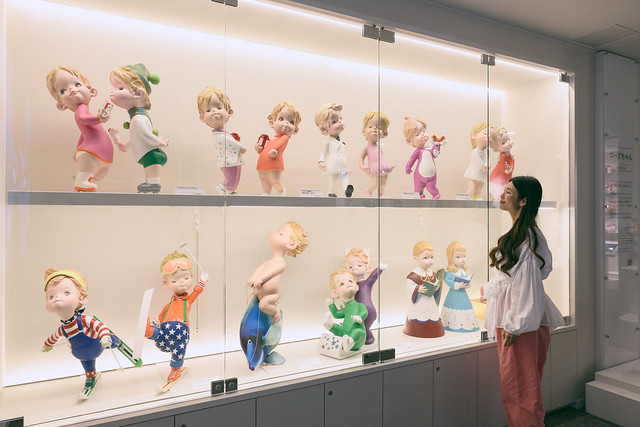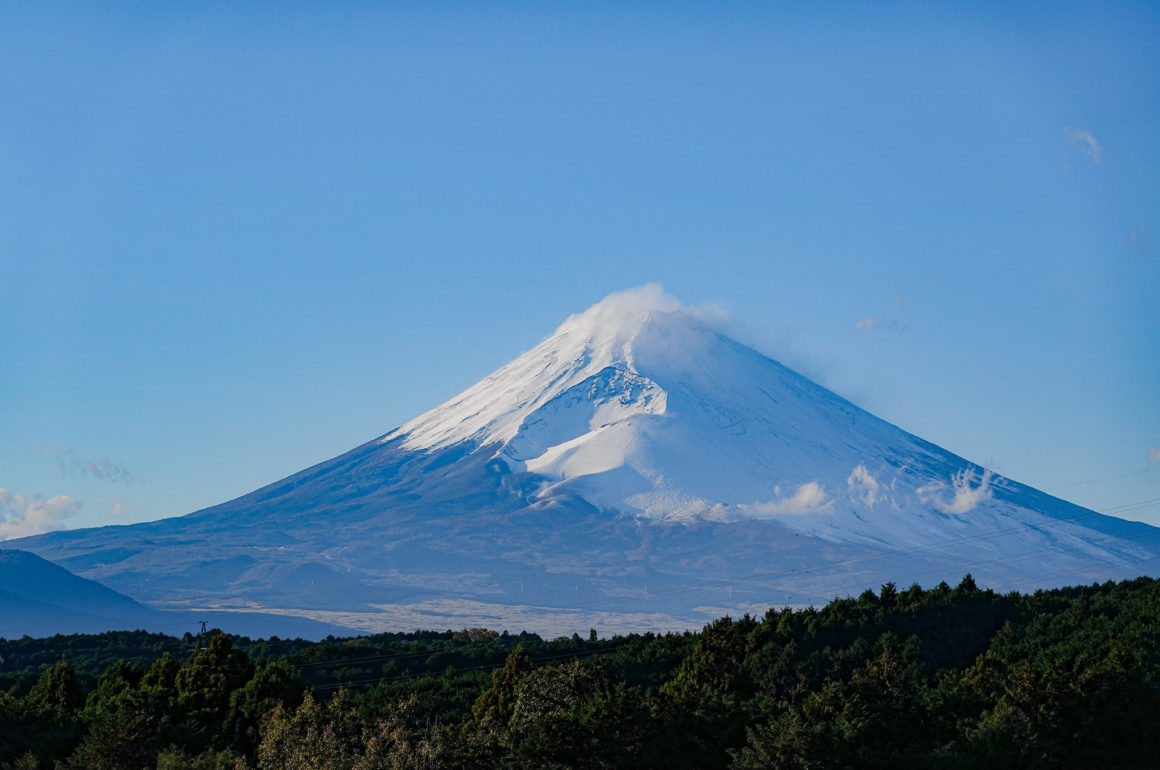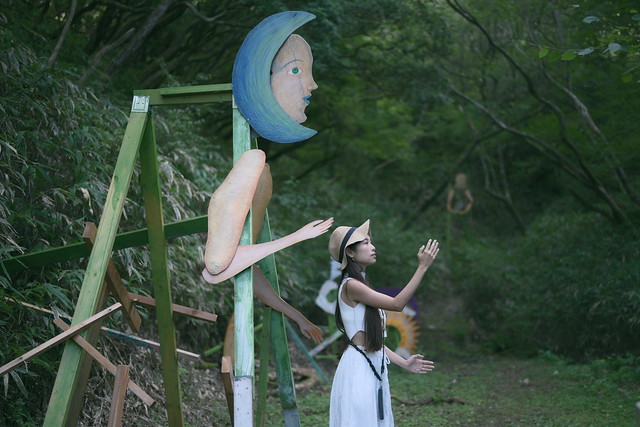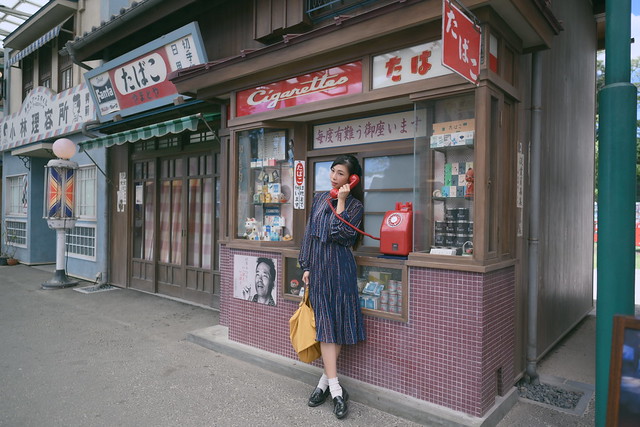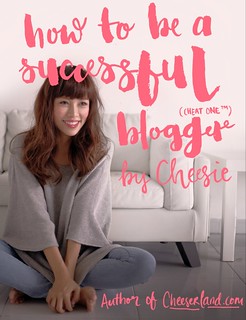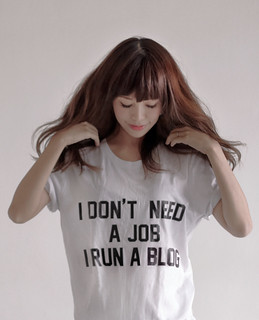
(想看中文的翻譯,請點這!)
Picture this: five days of sake-induced giggles, cultural capers, and an avalanche of instagenic photos that will have your iPhone storage pleading for mercy, and by the end of the this boozy voyage we may or may not have emerged as Japanese sake connoisseurs… and that’s just the tip of the sake bottle.
Make yourself a hot cuppa coffee (or sake, to match the theme–hey no one is judging here) because we’re diving into a very, very long article (3500 words!) of a five-day whirlwind through Japan’s Chugoku Region, swirling sake and unlocking travel treasures.
But first, let’s get our geographical bearings straight.
First of all, where is Chugoku Region?
Known also as the San’in Sanyo region, Chugoku is a captivating blend of five diverse prefectures – Tottori, Shimane, Okayama, Hiroshima, and Yamaguchi. But don’t let the geographical size fool you; this region packs a punch of natural wonders, cultural treasures, and, very unexpectedly for many, sake adventure galore.
If you understand Chinese or Japanese, you may have guessed the meaning behind its quirky dichotomy: the yin and yang of the San’in and Sanyo. While San’in, comprising Tottori and Shimane, embodies the essence of “shady mountain” (山陰) and often shrouds itself in a mysterious mist, Sanyo, home to Yamaguchi, Hiroshima, and Okayama, basks in the glory of “sunny mountain” (山陽), bathing its landscapes in endless sunshine. It’s almost like the region couldn’t decide whether it wanted to be mysterious or throw an eternal beach party. Well, the good news is, you can have both!
Fun fact! The region’s official home page is “into-you.jp” which is a word play on the Japanese pronunciation of “yin” (in) and “yang” (you, pronounced yoh), and the word “to” (toh) means “and”, which literally means “yin and yang”. Pretty genius eh?
View this post on Instagram
Starting point: Fukuoka

For those of you who are able to fly in to Fukuoka, things get very interesting. If you either take the shinkansen straight from Hakata Station to Shimonoseki Station, or if you plan to tour around Mojiko Port in Kitakyushu a little, you can literally walk underwater (yes, you heard that right!) from Kyushu Island, all the way to Honshu (Japan’s main island!)
The Kanmon Tunnel, officially known as the Kanmon Pedestrian Tunnel, is an underwater tunnel that connects Fukuoka Prefecture (of Kyushu) and Yamaguchi Prefecture (Honshu). It’s an engineering wonder that allows pedestrians to make this cross-island journey without getting their feet wet. What’s more, there’s a photo spot that lets you show off exactly this marvelous feat. The walk will generally take about 15-20 minutes. Pretty cool right?
Day 1: Shimonoseki City
Karato Fish Market
This local fish market makes the grand entrance once you step foot in Shimonoseki City.

This seafood spot a bustling hub of marine delights, where you can dive into a world of fresh catches and delightful flavors. If you want to witness the market’s liveliness and taste the freshest seafood, early mornings is when fishermen bring in their catches of the day.
We arrived a little too late to see the stalls still open, so we made a beeline to Karato Suisan for some delectable sushi.

Other than the extensive menu featuring a wide variety of popular sushi options, you can also savor local flavors and experience the essence of Karato.

Pro tip: Try the whale meat sushi for that “I’m officially an adventurous eater” badge.
Shimonoseki Municipal Aquarium Kaikyokan

It may seem a little counterintuitive to visit an aquarium right after a sushi meal… (or vice versa), but in Japan, we honor the concept of itadakimasu and Kaikyokan is exactly the place to appreciate the wonders of the ocean, what more a chance to learn about the importance of marine conservation.

This marine facility is well-known for its special focus on marine life from the Seto Inland Sea (yes, including those where local fishermen harvest for a living), with many captivating exhibits featuring adorable aquatic creatures like dolphins and penguin, as well as a particular culinary and cultural icon of Yamaguchi Prefecture – the pufferfish, known as “fugu” in Japanese.
We will learn all about fugu, and then go on a full fugu feast at night (more about that later!)
Shimonoseki Shuzo

Here comes our first sake saga: Shimonoseki Shuzo, also known as the Shimonoseki Brewery. Celebrating its 100th anniversary, this charming little brewery strives to breathe new life into sake making.

The prince charming of the brewery, Uchida san, embarked us on the most easy-to-understand sake lecture for beginner I’ve ever participated in. On hind sight, it was indeed the perfect start to the deepening rabbit hole of our sake expedition.
Uchida san explained the various components that make up a sake blend, such as different rice varieties, water sources, and fermentation techniques.
What is most unique about the brewery is that for JPY5000, you can take home the one and only specially blended sake made by you.

After the informative lecture, you are all ready to play mad mad scientists (who are rather clueless).
It was like a tipsy chemistry class, with sake glasses, lots of sniffing, and fits of laughter. You’ll have the chance to taste different sake components and experiment with various proportions to create a sake blend that suits your palate. Talk about an alchemist’s dream come true!

Presenting “Cheesie Lable”, my prized bottle to keep as a cherished memento of this sake blending adventure.
Shimonoseki Grand Hotel

To make things very convenient, we stayed the night at Shimonoseki Grand Hotel, which is right besides Karato Fish Market. For dinner, we enjoyed their kaiseki-style dinner in a welcoming atmosphere, a gastronomic symphony that paired divinely with our freshly crafted sake masterpieces. (If you bring in your own specially blended sake from Shimonoseki Shuzo, there’s no bottle charge!)

The highlight of the day is a fugu feast, where the spiky fish is served in many different styles including sashimi, hot pot, deep-fried and marinated! Each cooking method brought out different textures and flavors in the delicacy.
Day 2: Mine City
Day two spirited us away to Mine City, a hidden treasure nestled in Yamaguchi Prefecture.

Our first destination: the ethereal Beppu Benten Ike, a cobalt blue pond so blue it could give the sky an identity crisis.

Located within the grounds of Beppu Itsukushima Shrine, this spring is a natural power spot and it is also where our next destination–another local brewery featured below–uses it to brew their sake.
Ohmine Shuzou

Yet another potentially tipsy pitstop… but with a twist – this time we opted for a café break.

This ultra stylish cafe lets you sip in sake-infused beverages (who fancy a cuppa hot ginger amazake on a chilly autumn day?) and desserts while relaxing into the vast nature of Mine City.
Akiyoshidai Karst Plateau

Located just 10-minutes away, you wouldn’t want to miss this captivating natural wonder of Yamaguchi Prefecture.
Karst landscapes are characterized by limestone bedrock that has been eroded over millions of years, resulting in various distinctive geological formations.

Being a popular spot for hiking and photography, one can’t help but marvel at the grandeur of this dramatic art piece of mother nature.
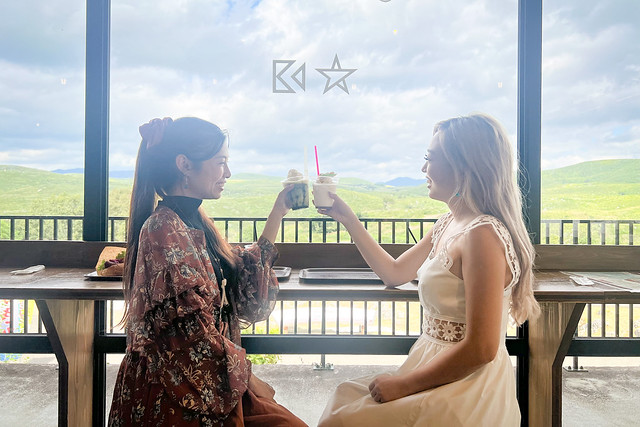
Pop by Karstar, a visitor center and cafe where you can learn all about the geopark’s history while chomping on delicious Akiyoshidai plateau beef burgers.
Iwakuni City

Iwakuni boasts a deep historical heritage, apparent through the beautiful Iwakuni Castle and the city’s most iconic landmarks-Kintaikyo Bridge.

Kintaikyo Bridge is often considered one of Japan’s most picturesque bridges, spanning across the Nishiki River and is composed of five graceful wooden arches.

For a little change of game, we had colorful soft-serve instead of more booze. It’s called balance, y’all.
Iwakuni White Snake Museum

Don’t miss this nearby attraction as my previous visit was pretty remarkable in terms of good fortune that comes with it.
Well, in Japanese folklore and some cultural beliefs, white snakes, known as “shirohebi,” are often associated with positive omens, especially when it comes to… *ahem*… financial gains. Let’s just say that I bought a snake-shape ring here during my last visit and I have seen a boost of incoming job opportunities. (Not financial advice ahem.)

The museum houses a collection of gracious albino white snakes, and offers lots of opportunities to delve into the biology, behavior, and natural habitat of these unique reptiles. Children would be delighted with all the interactive games!

I just had to bring this super therapeutic baby hebi home–an aroma diffuser that is made in Japan. Talk about a scent-sational souvenir!
Hiroshima City
For logistical convenience, we decided to spend the night in Hiroshima City before continuing our journey to Shimane Prefecture.
If you’re seeking a relaxing spot to unwind, look no further than Flat Sake Bar.

This Japanese sake specialty bar is nestled right in the heart of Hiroshima’s vibrant entertainment district, Shintenchi.

We highly recommend trying their “kikizake” set, which offers a delightful tasting experience with three different local sake varieties from Hiroshima.
We had a great night in Hiroshima, and I would be detailing more about the prefecture in the last half of this article.
View this post on Instagram
SHIMANE PREFECTURE
Day 3: Izumo City
Moving on, day three saw us cross the threshold into Shimane Prefecture, eager to unearth more sake surprises. Oh wow, where do I even start?
The first city we stopped by was Izumo City, often called the “Land of the Gods.” Rumor has it that even the rabbits here have a personal connection with a deity or two (true story).
Izumo Taisha Grand Shrine

The superstar of the day is of course, the one and only Izumo Taisha Grand Shrine. Notice the word “grand” in it? Well, that’s because it is exactly what it is–spotting Japan’s largest shimenawa (sacred rope), so big I couldn’t even fit it all in one photo.

Izumo Taisha Grand Shrine is, to say the least, serene and soul-stirring at the same time. Surrounded by lush, sacred pine trees of centuries of age, this divine sanctuary of ancient legends us the very place where all 8 million deities gather every October in the lunar calendar. I wonder what kind of important meeting agenda they have this year?

Before you leave, don’t miss the opportunity to pick an “omikuji”, maybe the deities have a message for you after all for coming all the way here!
Okuizumo Nagomian

Oh, before I forget–we actually stopped by Nagomian, a charming eatery where soba takes the center stage in Unnan City, enroute to Izumo.

The experience of witnessing owner-chef lovingly tossing strands of handmade soba with flair felt like home for some reason.

Ultra crispy tempura fried in sesame oil and the 3-deck 100% pure buckwheat noodles serves as a warm, comforting hug for your taste buds.
Sakemochida Brewery
Right… I haven’t touched a made-in-Shimane bottle yet, have I?
Well, here I go. Sakemochida Brewery is a small, family-owned brewery that has been crafting sake for generations since 1877. In fact, I met their 5th generation owner, Mochida san. Don’t you just love meeting people of the same family name as their shop handle?

At Sakemochida Brewery, you’ll find a diverse selection of sake, from crisp and refreshing junmai ginjo to rich and aromatic junmai daiginjo. There’s a sake for every palate, whether you’re a newcomer to the world of sake or a seasoned connoisseur.

You will find amusing displays of ishiki kazari (一式飾り)–folk art tradition often found in Izumo region where a complete set of various everyday items such as pottery, metalware, tea utensils, are creatively arranged into an art form inspired by historical figures or other imaginative ideas. Featured here is Benkei, one of my favorite histical warrior of Japan who has an affinity with Shimane.
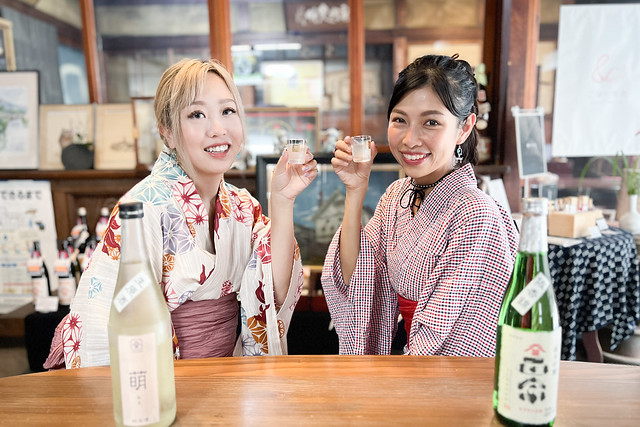
Mochida san flexed his utmost hospitality and treated us to a diverse selection of sake, from crisp and refreshing options to rich and aromatic alternatives. There’s a sake for every palate, seeing how I absolutely adore Sakanishiki, a dry junmai-ginjo and Ariel favors her sweet “Moe” junmai-shu.
Momen Kaido (The Cotton Road)
This historical route in Hirata Town (which used to be a city but merged with Izumo now) played a significant role in the transportation of cotton during Japan’s Edo period, and permanently transformed the comfort level of the lives of local townspeople.

You see, before cotton cultivation was brought into Japan, the peasants had to wear rustic clothings made of crude materials such as mulberry barks and other plants, which are rough to the skin. Only nobleman and the aristocrats has privileged access to silk and other prestigious imported fabrics. I can’t imagine how life must have been…
But the vast cultivation of cotton was made successful in Hirata City (then), and the Momen Kaido serves as a spot of economic significance to the development of regional textile industries and craftsmanship.
However, the later era saw a sharp decrease as imported cotton became a cheap option, the town that once flourished has slowly become obsolete…

Here, you can gets hands-on weaving cotton the most traditional (and very, very laborsome) way, to get a taste of Japan’s glorious yesteryears. I have gained new insight and appreciation for the very basic thing that’s so indispensable yet we often take for granted–the clothes we wear.
I have vowed to myself to support local as best as I can when it comes to fashion retail therapy next time.
Izumo Museum of Quilt Art

The one and only quilt museum in Japan, this gallery exudes all sorts of zen aesthetics.

Quilting involves stitching together layers of fabric to create intricate and visually captivating textile pieces, and Yawatagaki san, the sensei behind all these masterpieces, handcrafted from sumptuous antinque kimono and other traditional Japanese fabric.

There’s also a seasonal theme for each exhibition. This autumn, it is “pine and crane”, both which holds deep symbolic significance in Japan.
I absolutely adore how various stones were laid on the tatami to recreate a vibe of Japanese zen garden, and how most of the art pieces are inspired based on the theme of “inori” (prayers in Japanese. One wonders what kind of stories go behind all the worn kimono and what kind of lives the owners have led.

You can also take a break sipping matcha and a specially designed seasonal wagashi sweet for the msueum.
RITA Izumo Hirata

We then checked in RITA Izumo Hirata, a small sake brewery turned modern guest house where travelers can book the entire building.

What’s unique about the accommodation is that you can observe the 3-storeys and imagine how it must have been like when aromatic sake were fermenting right here.

To add to the charm, there’s a hinoki-buro tub and bottles of sake from Sakemochida Brewery ready for your intoxicating bath! (The bottles are for your body, not your tastebuds, remember!)
Trattoria 814

As with most historical districts, shops close pretty early. The streets were quiet, but luckily, there’s a stylish Italian restaurant called Trattoria 814 ready to serve you. What’s more, for guests staying at RITA exclusively, a special menu where each of the tantalizing dish is paired with a glass of sake from Sakemochida Brewery.

Kanpai!
Matsue City
Matsue City itself deserves another separate post, but let’s just make a quick detour as there’s something cool happening right at national treasure Matsue Castle–Suitoro Lantern Festival!

The annual event features captivating lantern displays that illuminate the city’s streets, parks, and waterways.

Hundreds of lanterns of various shapes and sizes are artfully arranged to create breathtaking scenes. There are also street performances, food and drinks available, such as local sake tasting, including one that has already been highlighted many times before earlier–Sakemochida Brewery!

A Matsue clan feudal lord with his accidental dango captured on my camera.
View this post on Instagram
HIROSHIMA PREFECTURE
Day 4: Saijo Sakagura-dori Street
Think that we have had enough sake by now? Well, the climax of our high spirited voyage has only just begun, right in midday!

We entered Hiroshima Prefecture and made our way to Saijo Sakagura-dori Street, an atmospheric street full historical sake breweries located in Saijo, a district in Higashihiroshima City.
Spot the red tower-like structure behind? Those are the red-brick chimneys, an iconic symbol of each sake brand on Sakagura-dori Street. See if you can spot all 12 chimneys around the station.

It’s a pleasure just strolling around the street even if you are not into sake, because every nook and corner is worth of an Insta post!

First, you may want to pop by the information center for a map of all the sake breweries and attractions nearby. Note that there are a total of seven breweries in the area, six of which we have managed to visit.

You can also find lots of endearing local souvenirs such as Nonta, the mascot for the area. See that manhole-looking thing? It’s a very #onlyinJapan moment when you spot a merchandise made out of a beautiful manhole!!

I won’t go into too much details of all the sake breweries, but each of them have unique personalities just like their sake, and many of them stood the test of time being century-old, the most historical of which were “Hakubotan”, founded in 1675, which makes it also the oldest sake brewery in Hiroshima.

Note also how each breweries have their own water well with pristine water flowing out called the “shikomi-mizu”, a term referred to the water use for sake brewing, which is one of the most important aspects sake creation, if you think about it!

One of my favorite tasting session was at “Kamoizumi”, one of the pioneers of junmai-shu (pure rice sake) in the region. I was astonished to learn that the romantically pink-tinted liquid called “COKUN” had nothing extra added to it, but is pure rice sake brewed with a special method!
It was light, slightly fruity and citrusy, making it taste more like rosé instead of sake. What’s more, it’s ultra pretty when served in a glass.

Kanpai, again!

If you are looking for lunch, there’s a quirky cafe that offers simple lunch. This is “kome-kara”, crispy fried chicken infused with Saijo sake and rice powder. Love the “namako wall” design on the plate–a typical sight around Sakagura-dori Street.
View this post on Instagram
Takehara City
I may or may not remember how we actually got here, since I was pretty tipsy by the end of our sake tasting marathon in Saijo, but we made it to Takehara, a well-preserved historical district that used to be a saltwork town lined with traditional merchant houses and cultural heritage that offers visitors a glimpse into Japan’s past, so much that it earned the nickname “Little Kyoto of Aki” (Aki is the old province name for Hiroshima).

You can find yourself sighing in awe at a breathtaking sight like this up at Saihoji Temple…

or amused at this random little temple built right in the middle of the road. Takehara historical district is just full of surprises.

As the day came to a close, we checked in at NIPPONIA HOTEL in the district, a series of boutique guesthouses all over Japan usually housed within a beautifully preserved traditional Japanese machiya (townhouse).

NIPPONIA is a prime example of a renovation project that successfully combines historical preservation with modern comfort. While the exterior maintains its historical charm, the interior is equipped with contemporary amenities, I really couldn’t ask for more when it comes to luxury!

We enjoyed a hearty dinner right opposite our accommodation, not without a glass of fine sake, of course.

Do expect really delicate fusion-style dishes crafted meticulously using local ingredients which taste like a party in your mouth!
Day 5: Okunoshima Island

This rabbit island has made its Insta-fame in recent years given how popular its cute and cuddly inhabitants are.

Your journey begins by traveling to Tadanoumi Port, and take a 15-min ferry (if you are lucky sometimes it’s in lovely pink!) across to the bunny paradise.

I was at Okunoshima back in 2019, where apparently 900 wild rabbits roamed around. But this time around the number seemed to have reduced quite a bit down to about 500. Since the increase of visitors, most bunnies are very well fed (you can purchase the pellet at the Tadanoumi Port Terminal for JPY200), you’ll be lucky to find one who come up to you begging for snacks.

If you are a bunny lover, don’t miss out the souvenirs at the only resort hotel on the island and pick up a couple of adorable bunny-themed keepsakes.
Setouchi Jozojo

This was our final day and we had an evening flight out from Hiroshima, but before ending our journey, we couldn’t miss a few instagenic pit stop along the way.

Lunch at Setouchi Jozojo offered breathtaking views of the Seto Inland Sea, setting the stage for a final toast to our unforgettable sake girl’s trip… but with a twist.

Setouchi Jozojo is actually a winery, so we clinked our wine glass (mine a wine-style grape juice!) under the bright blue sky against the backdrop of my favorite ocean.
Fudekageyama Observatory

Our next brief stop is Fudekageyama Observatory in Mihara City, where again gave me the luxury to admire Seto Inland Sea’s serene coastal landscapes.
If you come in spring, this locale turns all pastel pink with 2000 cherry trees dotting the mountain.
Sera Kogen Farm

Our final stop was Sera Kogen that was awaiting us with a floral explosion.

Donned in seasonal blooms such as garden mum and dahlia, this is a spot where you can frolick in the fields of floral delight and revel in the beauty of the Japanese countryside.
View this post on Instagram
That ended our five-day adventure through Japan’s Chugoku Region before we bid farewell at Hiroshima Airport.
It was truly a mesmerizing experience blending cultural immersion, culinary delights, and of course, our newfound appreciation for the art of sake-making.
If you are looking to explore the hidden treasures of Chugoku Region, hop over to the region’s official website for more inspiration!



